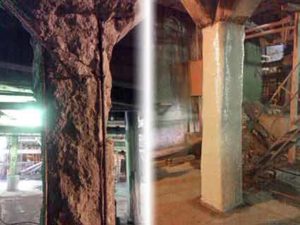†Strengthening Concrete Structures: A Greener and More Efficient Approach Concrete is the backbone of modern infrastructure, but its durability has been declining over time. From bridges to buildings, many structures are showing signs of wear and tear, and the issue isn’t just about aging—it’s also about how we maintain and reinforce these systems. While concrete has served us well for decades, today’s materials and environmental challenges demand more sustainable solutions. The good news is that alternatives like carbon fiber reinforcement are proving to be both effective and eco-friendly. One of the main reasons concrete deteriorates is due to corrosion of the steel reinforcement inside it. When moisture and air penetrate the structure, the steel starts to rust, which causes expansion and eventually cracks or spalling in the surrounding concrete. This process can lead to major structural issues over time, especially in areas with harsh weather conditions or high levels of pollution. Repairing these problems before they escalate is crucial—not only for safety but also for cost-effectiveness. Replacing damaged concrete is an option, but it comes with a heavy environmental price. Cement production is one of the largest contributors to CO2 emissions globally. According to some estimates, producing a single ton of cement releases nearly a ton of carbon dioxide into the atmosphere. That’s why repairing rather than replacing is not just smarter—it’s more responsible. Carbon fiber reinforcement offers a game-changing alternative. It’s lightweight, strong, and easy to apply without adding extra weight to the existing structure. Unlike traditional methods, it doesn’t require extensive demolition or long downtime, making it ideal for busy urban environments or critical infrastructure. Plus, it uses a by-product from oil refining, which helps reduce waste and makes the process more sustainable. Using carbon fiber for structural strengthening can save up to 90% in costs compared to full replacement. It also extends the life of the structure significantly, reducing the need for future repairs. HJ3's carbon fiber systems are widely used in various applications, including columns, beams, walls, and underground structures. These solutions are not only efficient but also environmentally conscious, helping to lower the overall carbon footprint of construction projects. If you're looking for a reliable and sustainable way to strengthen your concrete structures, consider exploring advanced composite solutions like those offered by HJ3. They provide long-term value while supporting green building practices. For more information or to discuss your project, reach out to our team today. ††Zircon Sand,Zircon Sand Ore,Concentrate Zircon Sand,Refractory Material Zircon Sand JAR HING PRODUCTS.,LTD , https://www.jarhingproducts.com
